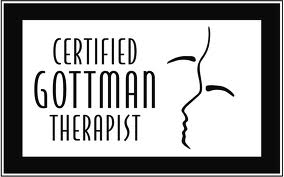 Yoga gives one the ability to integrate mind, body, and heart and to awaken to the divine within.
Yoga gives one the ability to integrate mind, body, and heart and to awaken to the divine within.
A major aim of yoga is self-transformation in order to experience atman within. Atman is both the universal spirit that pervades everything and the individual soul.
“Using the eight limbs in yoga we can move toward this personal transformation. Each limb requires perseverance. For instance, the ethical disciplines, or yamas, help us develop control over our actions in the world. The niyamas help us achieve purification. Practicing helps to develop self-discipline so that we are able to live harmoniously within and with others. The goal of yoga is freedom but before this is achieved, there is an incremental experience of greater freedom as we discover more self-control, sensitivity, and awareness that permit us to live the life we aspire to, one of decency; clean, honest communications; goodwill and fellowship; trust; self reliance; joy in the fortune of others; and equanimity in the face of our own misfortune. From the state of human goodness, we can progress toward greater freedom. From doubt, confusion, and vice we cannot. Progression in yoga is a moral one for a very practical reason rather than a judgmental one. It is almost impossible to jump from bad to best without passing through good.” –B.K.S. Iyengar.
Techniques used in yoga include the yogic construct of variagya, a general attitude of non-attachment and non-aversion. Along with abhyasa (practice, effort, and repetition), they are the methods Patanjali advises to restrain the mind’s fluctuations.
Variagya relates to a number of Western treatments for anxiety and depression. Essentially, it involves accepting unwanted thoughts and bodily sensations without wanting things to be different than they are in the moment. We often react to difficult feelings by catastrophizing or avoidance. Learning to remain emotionally balanced in the face of emotions, thoughts, and physical sensations help to overcome situational stress and to remain resilient to life’s challenges.
In addition to variaga, yoga makes use of meditation, breathing, mindfulness, and discrimination. Mindfulness is a large component of yoga therapy. By bringing conscious effort to attention, we witness internal and external situations directly so that we can disrupt unhealthy habits and create new behaviors. Mindfulness in yoga is similar to the mindfulness techniques that have been incorporated into many Western therapies such as dialectical behavior therapy (DBT), mindfulness-based cognitive therapy (MCBT), and acceptance and commitment therapy (ACT).
Yoga psychotherapy also makes use of the concept of viveka (discrimination). As in many cognitive-behavioral therapies, yoga therapy gives tools for examining the accuracy of our thoughts and beliefs. The ability to refine buddhi (the aspect of the mind drawn to truth that makes wisdom possible) through viveka will eventually penetrate avidya (ignorance). Confronting ignorance is an essential process with the ultimate aim of enlightenment.
Yoga psychotherapy uses breathing techniques called pranayama. For anyone experiencing anxiety or panic, learning to use abdominal breathing will help reduce symptoms such as light-headedness, rapid heartbeat, tingling hands, and flushing. Western psychology has similarly used various techniques to help people learn to move from shallow breathing to deep, diaphragmatic breathing. Biofeedback techniques such as the HeartMath system are helpful in regulating heart rate and breathing. Yoga offers many pranayama practices; each approach works in different ways on body systems. Some of these are included here as examples. However, the practices should be taught by an experienced practitioner who understands the nuances; if done incorrectly, they can cause problems.
- Psychotherapy in the Virtual Space: How teletherapy has changed the way we give and get care - April 26, 2021
- (home video area – couples counseling) - November 23, 2011
- (home video area – mindfulness) - November 23, 2011


Leave a Reply